Our 30-Day Decluttering Challenge Will Transform Your Home in No Time
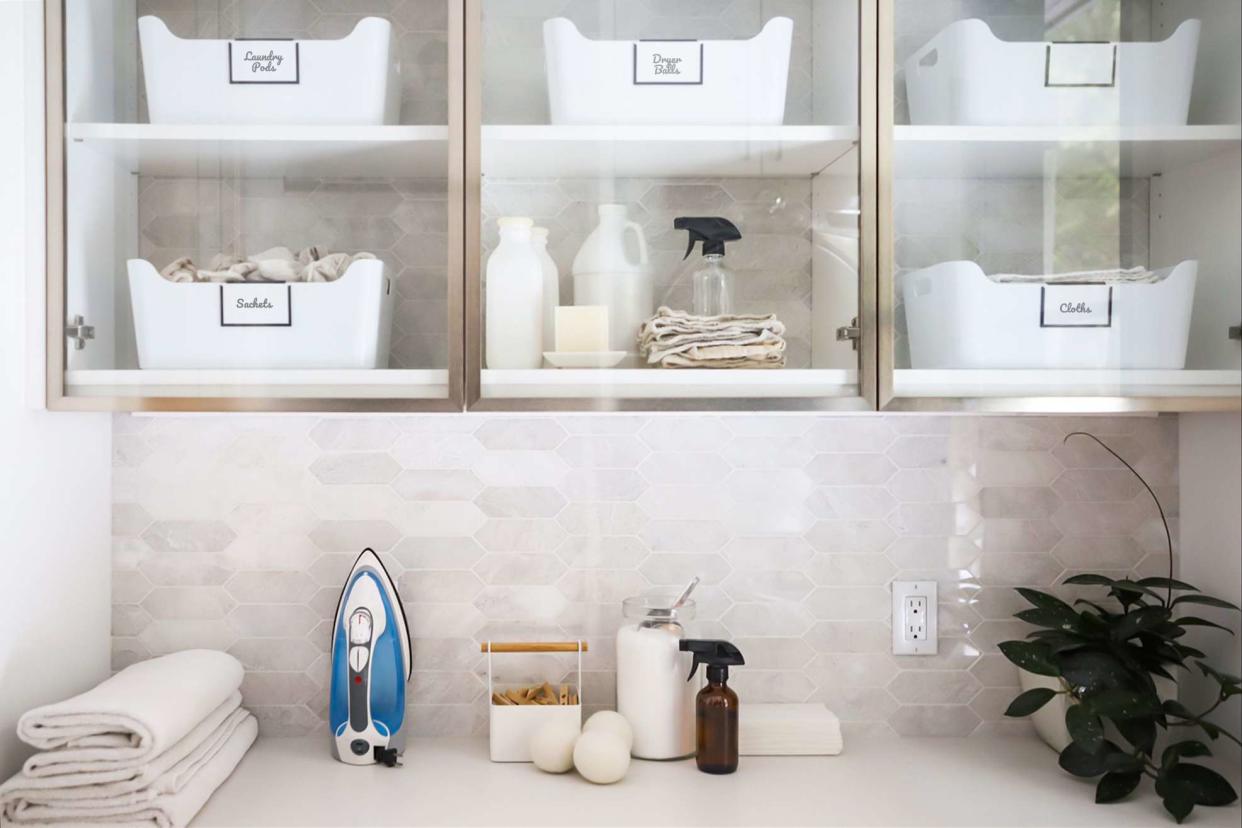
The Spruce / Sophia Reay
- Oops!Something went wrong.Please try again later.
If your home is overflowing with clutter, getting back to a state of tidiness and taking on the daunting task of decluttering can be overwhelming.
To help you, our experts have broken down the job into a feasible, 30-day method to get clutter under control.
Some jobs require less than an hour, others take a bit longer. Feel free to skip around according to your schedule, but if you do one task per day, your home will be more organized in just a month.
Meet the Experts
Katarina Blom is a certified psychologist and Swedish death cleaning enthusiast.
Sam Lund is a design, and organizational expert and co-founder of Simply Sam.
Clea Shearer and Joanna Teplin are the lauded home organization experts behind The Home Edit.
Day 1: Make a Plan
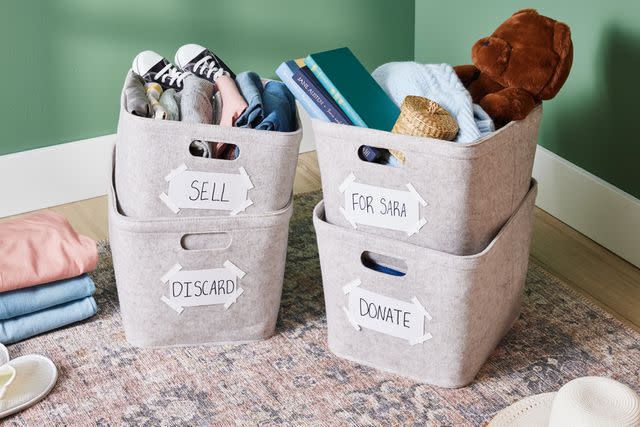
The Spruce / Jason Donnelly
As you begin a month of decluttering, it's a good idea to make a plan. Katarina Blom suggests these tips as you move from task to task.
Clear a workspace and have a trash bag handy for obvious trash, including broken or expired items. Next, set aside a box or bag for clothes to donate and items you no longer use, but could potentially bring joy to someone else.
"Designate a box with a big heart symbol for sentimental items that can be sorted later," Blom says.
Tip
As soon as the "Donate" box is filled, take it to your car or place it by the door so you can take it to a local charity as soon as possible.
Day 2: Get Rid of Paper Piles

Seb Oliver / Getty Images
Even in the digital age, there is still an amazing amount of paper clutter in our homes. Whether the paper pile is on your kitchen counter, desk, or entry table, it must be dealt with.
Grab a recycle bin and a paper shredder and go to work. Separate the pile into papers that require action like invitations, homework signatures, and bills. Take care of what you need to do and then discard them.
Before you leave this task behind, take the time to go online and switch paper billing to digital and cancel mailings and subscriptions you no longer enjoy.
Day 3: Empty Kitchen Counters

YinYang / Getty Images
Do you have any workspace on your kitchen counters or are they covered with clutter? Clutter limits the space you need for cooking and creates more cleaning because the items become splatted with food and attract dust.
Use a critical eye and remove appliances you rarely use, knickknacks that are just collecting dust, piles of paper, and dishware that belongs in a cabinet.
Day 4: Sort and Purge Kitchen Dishware and Gadgets
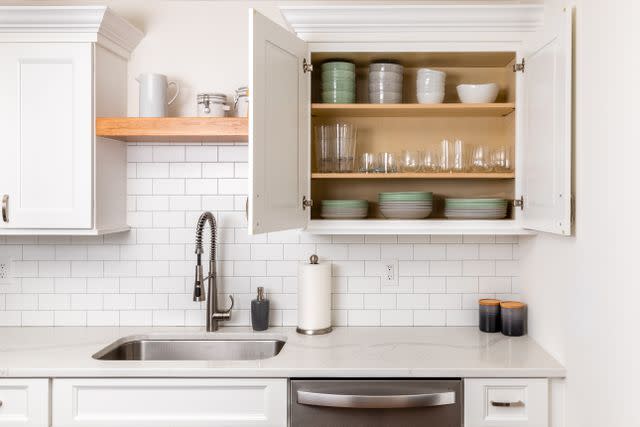
The Spruce / Rachel Vanni
Sam Lund recommends cleaning out your mugs and water bottles stashed in cabinets first. "Most people never use half of what they own," he says.
Move on to dishes, glasses, and old mugs that you haven't touched. Toss broken items and fill a donation box with items that others can use.
The team at California Closets suggests putting inserts into kitchen drawers to help keep cooking utensils and silverware organized and easy to find so meal prep is a breeze.
Day 5: Sort Food Storage Containers
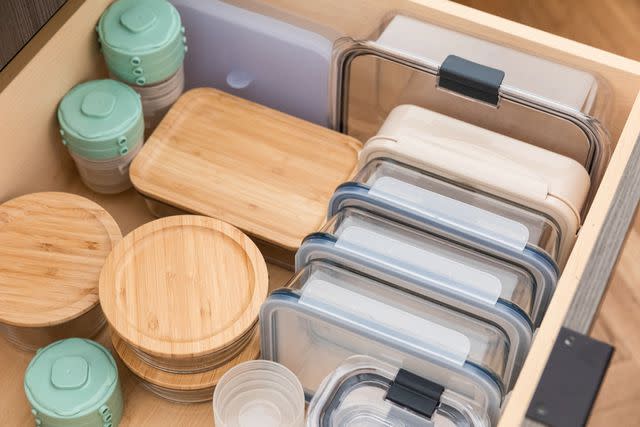
The Spruce / Leticia Almeida
There is little more frustrating than trying to find the matching lid to a food storage container. Today is the day to empty your stash of storage containers.
Sort by type and then get rid of anything that you no longer use or is missing a lid. Most take-out containers are not designed for proper food storage so add them to the trash or recycle bin.
Organize what is left and place them in a cabinet or draw with food storage bags, aluminum foil, and waxed papers.
Day 6: Get Rid of Expired Foods and Organize the Pantry
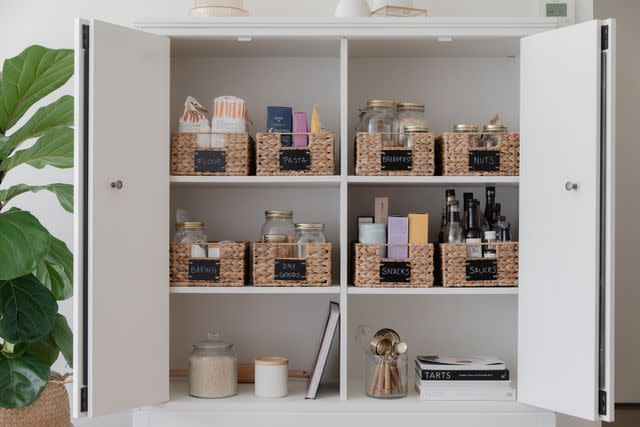
The Spruce / Leticia Almeida
Organizing a pantry is very satisfying and will make food preparation much easier. Take everything out of the pantry or food storage cabinet and give it a good cleaning.
Lund proposes you begin by tossing expired food and open bags and boxes that are stale. Create a box for your local food pantry of unexpired foods that your family just doesn't like or use.
Group what's left into categories (pasta, canned vegetables, snacks, baking supplies) and assign each to a spot within your pantry. Add labels so others can help restock after a trip to the grocery.
Day 7: Declutter Your Refrigerator Doors
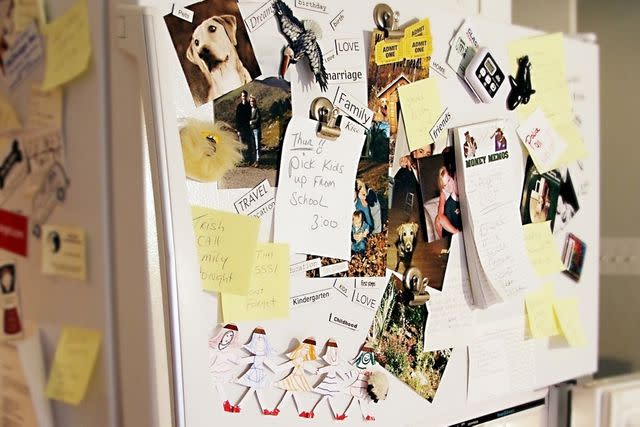
Just looking at a cluttered refrigerator door sends your brain into chaos. While you are free to express your personality with wacky magnets, inspirational quotes, or crayon-created masterpieces, declutter the fridge door.
Get rid of completed sticky note reminders, old business cards (put the information in your phone), and artwork that is more than six months old.
Day 8: Clean Out the Refrigerator

Cleaning out and organizing the refrigerator will help make meal preparation easier. Empty the refrigerator and toss any old or expired food into the trash, and don't forget the freezer.
Anything that's a mystery or covered in freezer burn should be discarded. Place the remaining food in a cooler with ice to keep it cold while you clean the interior of the refrigerator.
As you return food to the fridge, store foods that need to be eaten first before they spoil front and center. Label leftovers and use glass containers so you can quickly see what is on hand before you make a shopping list.
Tip
Try to do a refrigerator decluttering at least once a month.
Day 9: Organize Spices
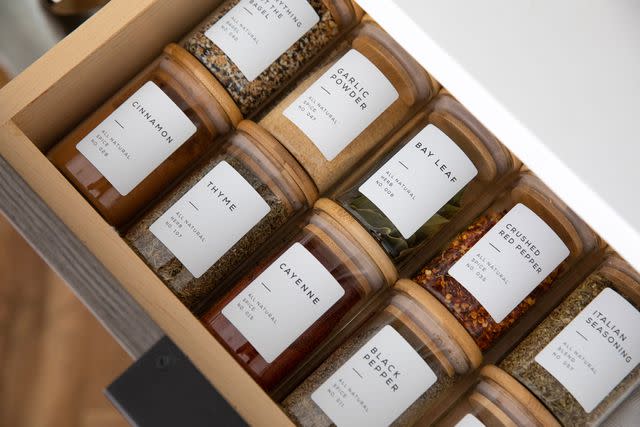
The Spruce / Leticia Almeida
Spices make food more flavorful but lose their potency over time, especially ground spices—do you know how old that jar of cinnamon in your cabinet is?
Whether you store your spices and herbs in a drawer, cabinet, or pantry, pull them all out and discard the ones that have long since past their expiration date.
To help you keep an eye on your stock, place the ones you use the most often in an easy-to-reach spot and organize the rest alphabetically. If you've transferred the spices to matching jars, be sure to label them.
Day 10: Tackle the Junk Drawer
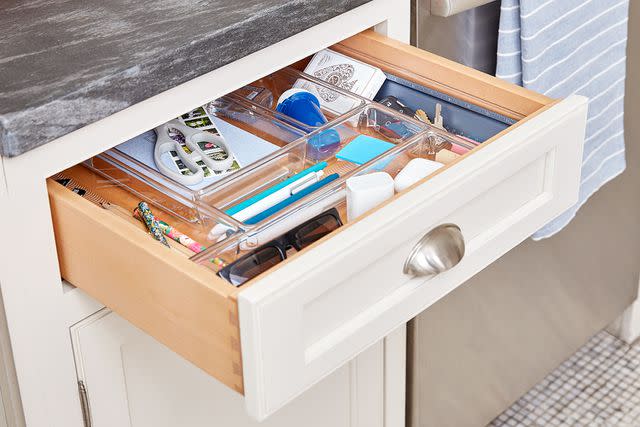
The Spruce / Margot Cavin
Every home has one, two, or three "junk drawers" holding all the things that we don't quite know where they should go, but seem like we should keep.
Lund recommends dumping the contents into a box or onto a table and then sorting through it all. Return items like tools to their proper location, and discard unwanted or unrecognizable items as you go.
Use drawer dividers or small containers to hold keys, paper clips, scissors, or whatever you need to keep at hand.
Day 11: Organize Book Shelves

The Spruce / Meg MacDonald
Depending on how many books you have, it may take a couple of sessions to weed out the books you no longer wish to keep and then organize the rest. Schools, assisted-care facilities, and libraries are usually happy to have some donated books.
After weeding, take a look at your bookshelves and determine the look you want. The books can be organized by color, height, or title. You may wish to add some decorative items to the shelves to change the aesthetic.
Day 12: Corral Toys and Board Games
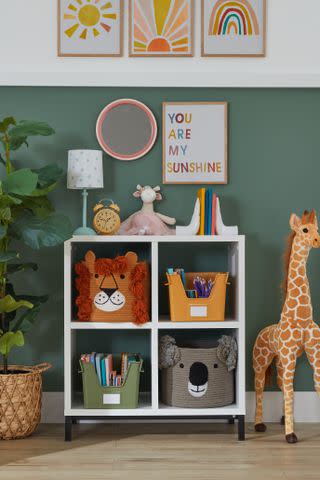
The Spruce / Jacob Fox
Lund recommends working with your children to gather toys they no longer use so it is an enjoyable experience for them to donate the toys—this is a great way to emphasize the importance of sharing with others.
Once you have cleared out the donations, Clea Shearer and Joanna Teplin, home organization experts behind The Home Edit offer tips for organizing the toys.
Sort things by age, category, and function, especially if you have several children. Place games that require parental help on a higher shelf, and larger items in easy-to-reach bins and baskets. Label the containers to encourage kids to keep areas organized.
Day 13: Streamline Bathroom Toiletries

The Spruce / Jacob Fox
How many bottles of shampoo and bath wash are in your shower? Remove products from the shower and bathroom counters. Consolidate half-used bottles and discard products that you tried and didn't like. Call a family meeting and agree on a couple of brands of toiletries to help keep the bathroom looking less cluttered.
Day 14: Dispose of Out-of-Date Makeup
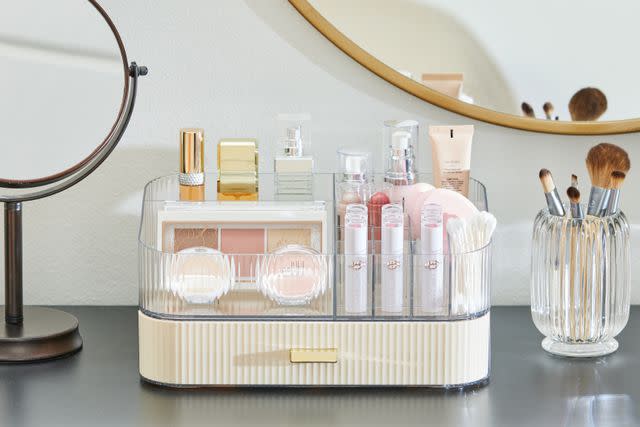
The Spruce / Jason Donnelly
If you have drawers full of make-up that is the wrong color or out-of-style, it's time to declutter. Keeping old products makes it more difficult to find the items you want.
Toss anything that is dried out or expired and don't forget the makeup bag in your purse. Get rid of old sponges and makeup brushes that have seen better days. Then, organize the supplies so you can see what's on hand.
Day 15: Sort and Organize Shoes
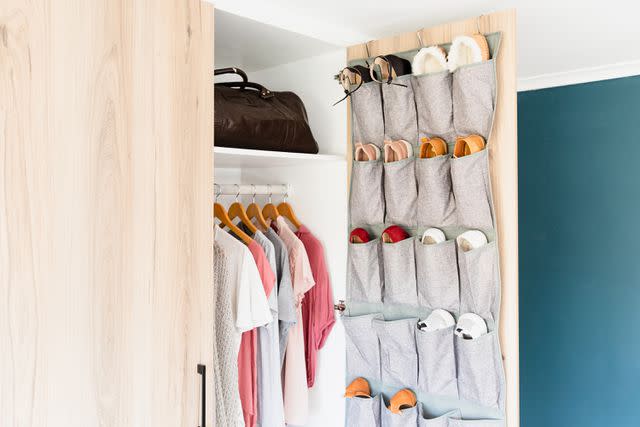
The Spruce / Michelle Becker
The California Closets clutter-control team offers this bit of wisdom when it comes to decluttering: before you can organize anything, you have to get rid of what you don’t need.
This advice is never more fitting than when applied to shoes. It's time to go through the shoes in your closets, under the bed, and in the entryway. Donate pairs that are still wearable and discard worn-out shoes.
The team recommends storing shoes in clear stacked bins to help your entryway, mudroom, or closet stay clutter-free. The bins work especially well for flat shoes, sneakers, or slippers.
Day 16: Organize Dresser Drawers
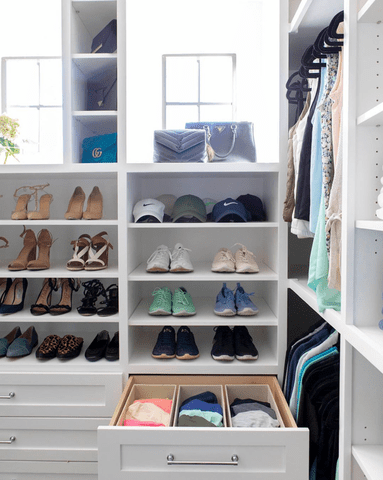
Depending on what you store in your dresser, you can declutter one drawer at a time or empty the entire piece of furniture and sort everything at once.
Empty the drawers and remove everything you no longer use or wear to toss or donate. Sort items into categories and designate a drawer space for each category. Use drawer dividers or organizational cubes for small items.
By keeping similar things together, you'll be able to find your belongings easier and feel more organized.
Day 17: Tidy Hanging Clothes
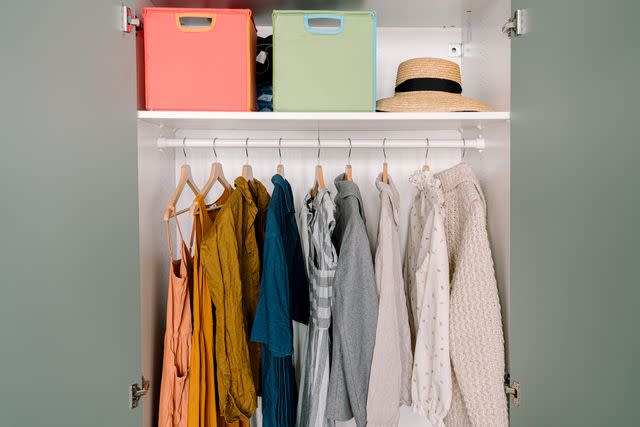
The Spruce / Daria Groza
If your closet is so cluttered you can't find anything, set aside this day to make a difference. Most of us have clothes and accessories we no longer wear that would benefit others.
Start by emptying everything from the closet. Vacuum it well and then turn a ruthless eye to the contents lying on your bed. If you haven't worn a seasonal piece of clothing in the last six months, it should be considered for donation.
Sort clothing into categories and organize your closet in a way that works for you. Some people like to hang items by color or group by type of garment.
Add organizing tools like bins, extra hanging rods, or over-the-door storage. Recycle extra clothes hangers, especially flimsy wire ones from the dry cleaners.
Day 18: Get Accessories Under Control
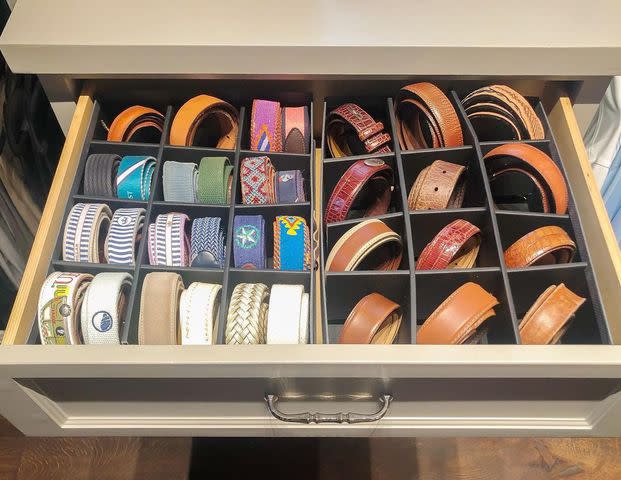
@neatbymeg / Instagram
Scarves, gloves, hats, and belts add style to wardrobes but also take up lots of space. Just like your clothes, take a ruthless eye on what needs to be purged.
Gather the items together and sort them into categories: handbags, belts, scarves, hats, mittens, and gloves. The California Closet team recommends installing hooks or racks in your closet to help keep accessories easily accessible, organized, and all in one place. If you prefer to keep items in drawers, use dividers to keep everything tidy.
Don't forget your jewelry. Lund advises us to declutter and organize our jewelry and donate or sell pieces we no longer wear.
Day 19: Declutter a Handbag, Wallet, or Backpack
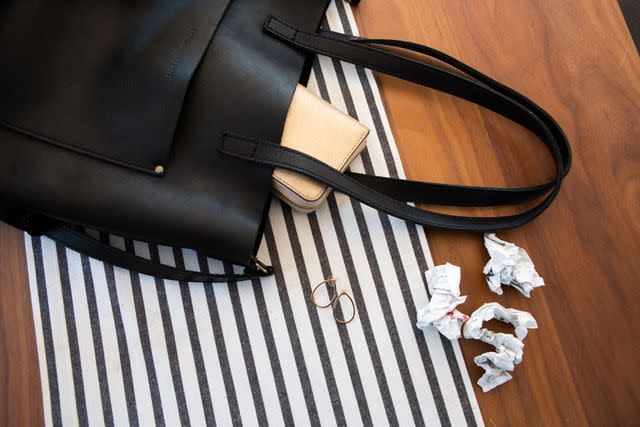
The Spruce / Sydney Brown
Just five or 10 minutes spent decluttering your handbag or backpack can make a huge difference in your day. Get rid of receipts, food wrappers, expired makeup, pens with no ink, and empty out the loose change. Use resealable plastic bags to corral basics so you can find them quickly.
Day 20: Straighten the Linen Closet
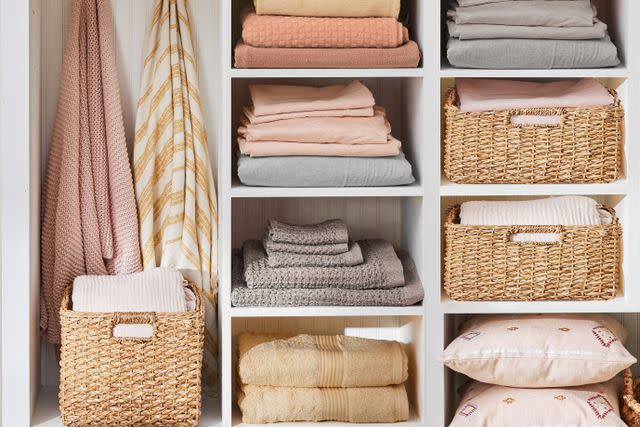
The Spruce / Jason Donnelly
It's time to declutter the linen closet if it is filled with sheets that no longer fit the beds you have, bedding in colors you no longer like, and towels that are filled with holes. Empty the closet and organize the contents into categories before you return the keepers to the closet.
Create an area of sheets, another for towels, and add labels for different sizes. Use baskets or plastic bins to hold toiletries and extra paper products.
Tip
Donate worn items to animal rescue groups. They welcome old bedding and towels.
Day 21: Organize Your Entryway
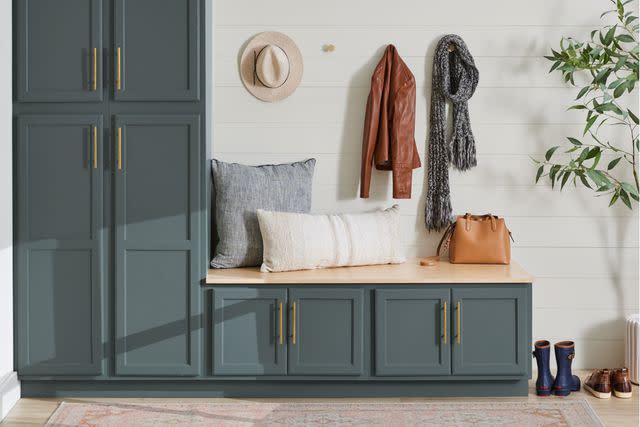
The Spruce / Jason Donnelly
Whether you have a mudroom or the front door opens right into the living room, the spot you enter a home can quickly become cluttered with coats, shoes, mail, sports equipment, books, and pet accessories.
Get started by returning everything that belongs in another area to its designated spot discarding trash and broken items as you go.
Add organizational tools like hooks for coats and dog leashes, a shoe rack, and a dish or basket to hold keys. If you have a coat closet near the entry, this is the time to empty and declutter it so you have some usable storage space.
Day 22: Declutter and Organize Your Laundry Routine
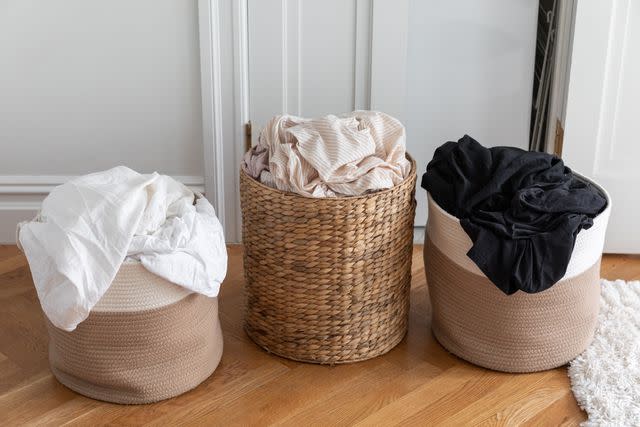
The Spruce / Leticia Almeida
If your laundry room is so cluttered you can't find the top of your washer and dryer, it's time to streamline your laundry routine.
Start by removing everything that is not necessary for doing laundry. If you keep other cleaning supplies in the same space, the team at The Home Edit recommends dividing the space into zones.
Sort through your laundry products. Choose a laundry detergent that works for all types of fabric and an enzyme-based stain remover that will tackle all types of stains. Don't forget to keep a trashcan handy for dryer lint and recycle empty containers.
Day 23: Organize Gift Wrapping Supplies
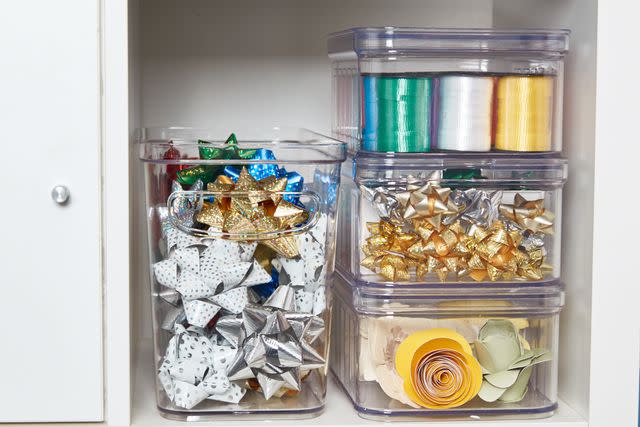
The Spruce / Margot Cavin
Even if you don't wrap gifts and just put them in a gift bag, you still need to organize the supplies. Start by pulling everything out and getting rid of crushed bows, short pieces of wrapping paper, and tangled ribbons.
You can then use a self-contained gift wrap storage organizer or clear bins to store the different types of supplies like gift tags, ribbons, and tissue paper. Don't forget to add tape and scissors to your stash so you won't have to hunt for those at the last minute.
Day 24: Dispose of Unused Office Supplies
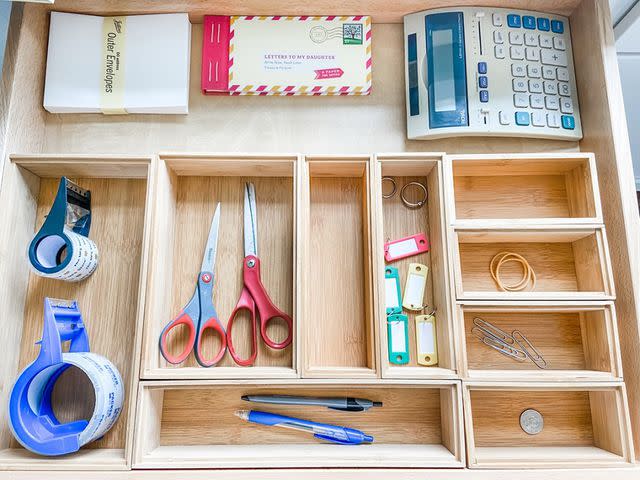
@afreshspace / Instagram
Frustrated by pens with no ink, stubby pencils, and never being able to find the sticky notes? Declutter your office supplies that are stashed in your desk, on the kitchen counter, or in the junk drawer. For the items you keep, use small dividers or clear boxes to sort and organize everything.
Day 25: Purge and Untangle Electronic Cords
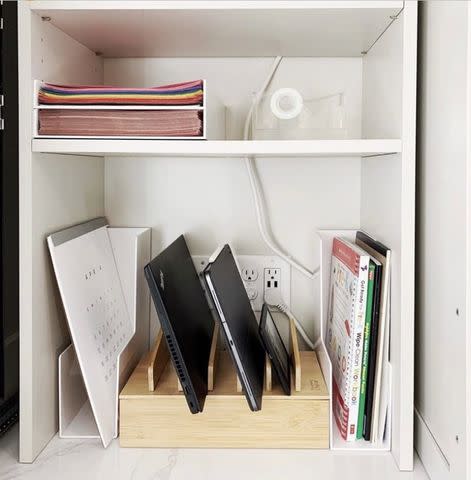
@joanna_organize / Instagram
That bin with tangled, unidentifiable cords only adds to the clutter in your home. Take the time to sort each cord and determine if it is still usable. Zip tie or use toilet paper tubes to separate each one and label them. You'll feel so accomplished.
Day 26: Sort Seasonal Items
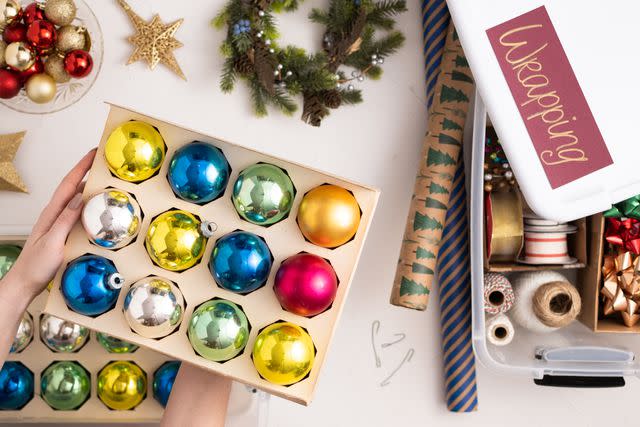
The Spruce / Meg MacDonald
Whether it is seasonal decorations, toys (sleds and pool floats), or outdoor garden supplies, take the time at the end of every season to declutter. Get rid of faded, shedding, and crushed decorations, gardening tools, half-used fertilizers, and out-grown toys.
As you decide what you should keep, think about your storage space. Be sure everything is in good working order, clean, and dry before you pack it away.
Day 27: Clean the Attic
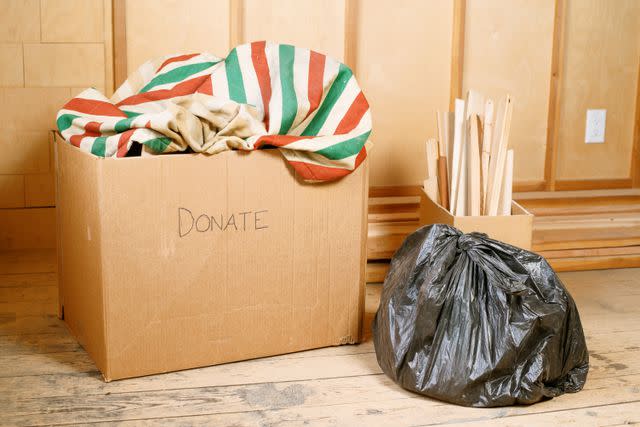
The Spruce / Sarah Lee
Pick a day with mild temperatures and head to the attic, which is probably filled with items you can declutter. Depending on the size of your attic and how much stuff has made its way into the attic, allow yourself to turn this into a multiple-day project.
Start in one corner and make three piles—keep, donate, toss—and touch each item only once. Once you know what you are keeping, it is time to organize.
Store in plastic bins that are pest-proof. Use clear bins or label the contents. Stack the bins with similar items together. Look for ways to add wire or wooden shelving between the rafters for better organization.
As you clear a space, sweep or vacuum to remove dust and debris. If you leave any furniture in the attic, use old cotton sheets to cover the pieces to help keep them clean.
Day 28: Clean the Garage
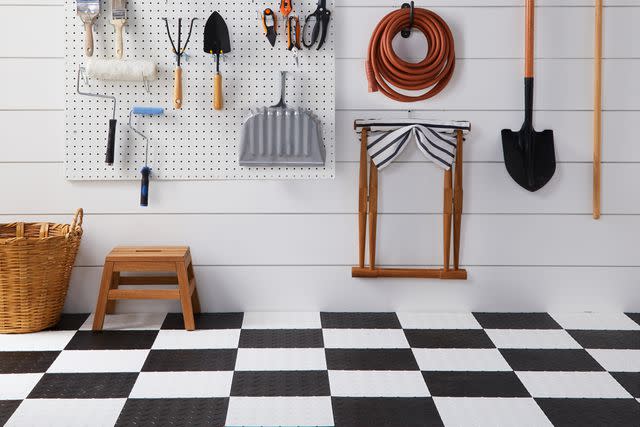
The Spruce / Jacob Fox
If you filled the garage with the clutter you removed from the house or it is already full, it's time to declutter the space. Work similarly to your efforts in the attic. Group tools, gardening supplies, and seasonal items together. Use labels and take advantage of the wall space.
Sam Lund suggests that while you're in the garage, grab a trash can and declutter the inside of your car, and don't forget the trunk.
Day 29: Identify and Secure Important Documents
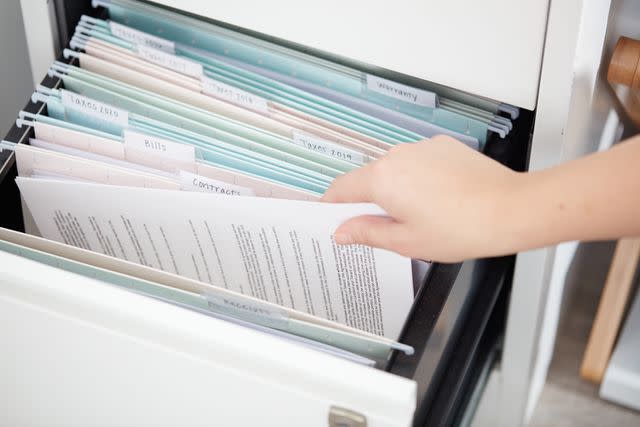
The Spruce / Margot Cavin
During your decluttering, you probably found some important documents scattered around the house. Passports, wills, tax documents, birth certificates, marriage and divorce records, military records, deeds, and car titles should be stored in a fire-proof box or safe.
Day 30: Sort Sentimental Items
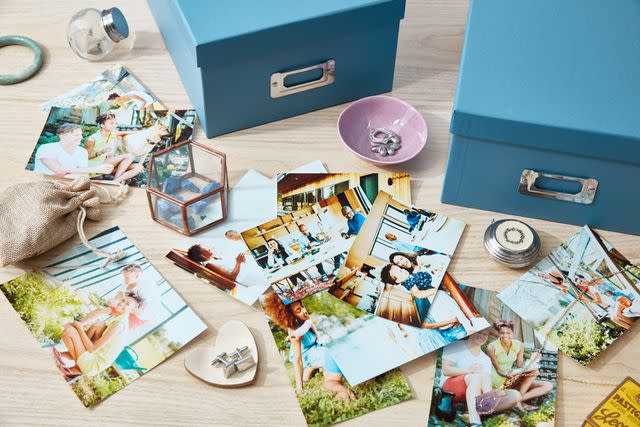
The Spruce / Margot Cavin
One of the most difficult categories to declutter is sentimental items and family heirlooms. Blom suggests offers ideas to make choices of what to keep and what to let go easier.
"While sorting through items together with family or friends, hold one up that is of emotional importance and ask,'“If this item could speak, what story would it tell?'" he says.
Once you have decided on what to keep, organize and write notes on the history of each item, what it stands for, and why it is being given to the next generation. Attach each note to each heirloom.
Read Next: Decluttering Checklist: What You Can Throw Away Right Now, Room-by-Room
Read the original article on The Spruce.

